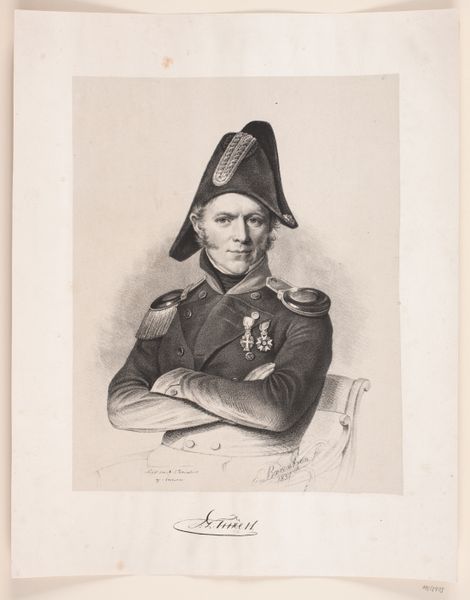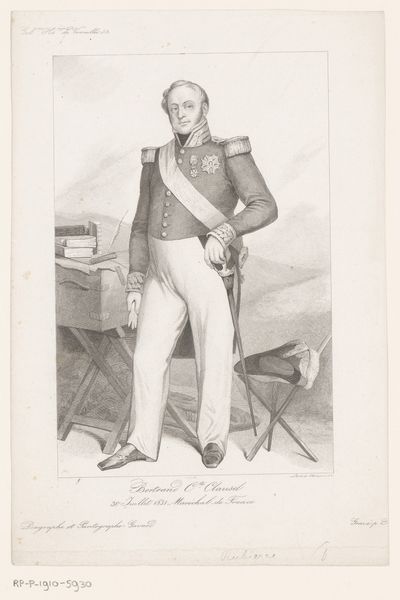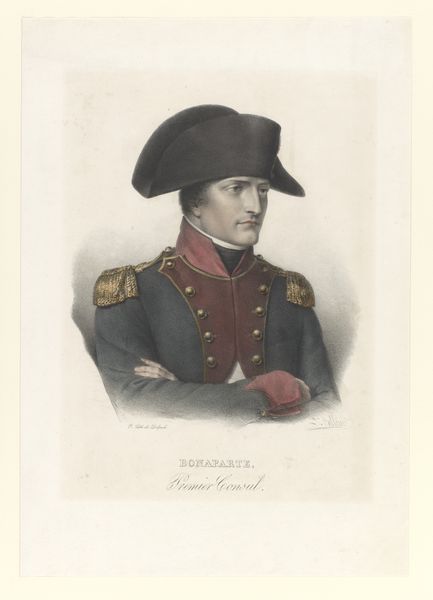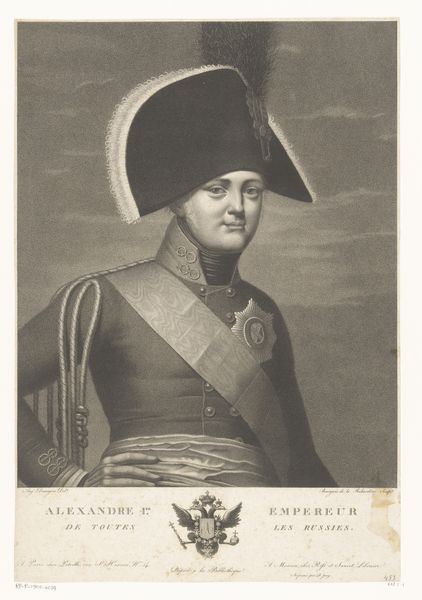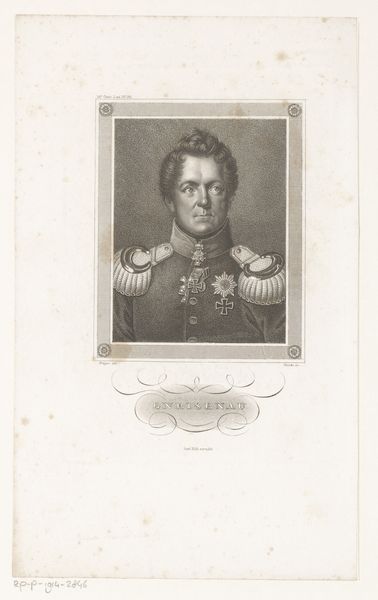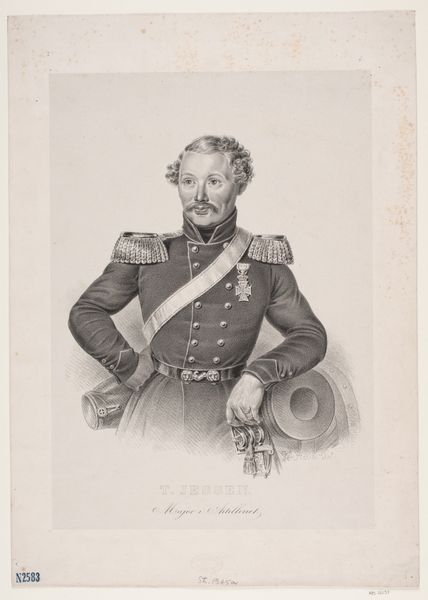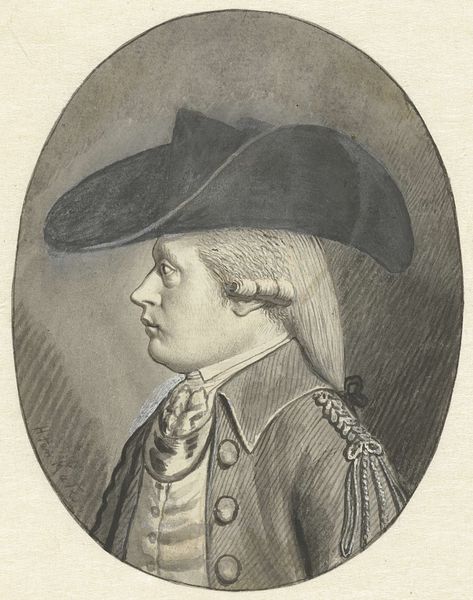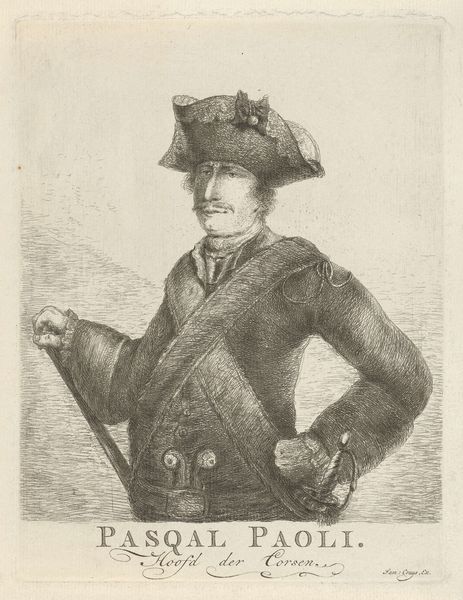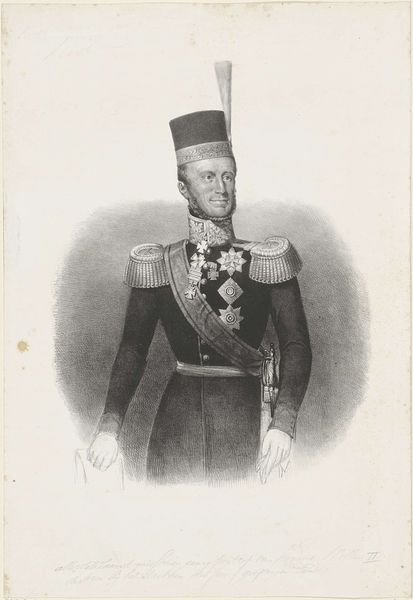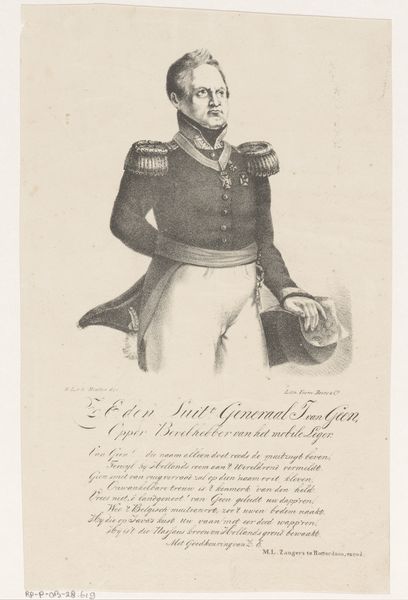
drawing, lithograph, print
#
portrait
#
drawing
#
lithograph
# print
#
pencil drawing
#
portrait drawing
#
academic-art
#
realism
Dimensions: 352 mm (height) x 255 mm (width) (bladmaal)
Curator: Immediately, I'm struck by the crispness and the air of restrained authority. Editor: Exactly. Let’s explore this lithograph a bit. It’s a portrait of Søren Ludvig Tuxen, dating back to 1842. The artist who rendered it is Emil Ditlev Bærentzen. Look at the detail achieved. Curator: I'm immediately drawn to the contrast of the soft shading used for the face against the more rigorously delineated military dress, medals and accoutrements, which speak to the societal position of the sitter. All those sharp lines suggesting status, and softened only by the man himself. It feels like a study in social structures being superimposed on an individual. Editor: Indeed. The materiality itself points to an interesting convergence of mass production techniques with portraiture traditions of the era. Lithography allowed for wider dissemination of his image compared to paintings that were exclusive to wealthier individuals or families. So in terms of labour, there's the manual skill to prepare the stones and then pull many impressions. It democratizes access to images in a way. Curator: And this print, as part of the collection at SMK, enters another sphere of circulation. It makes me think about its original audience. Did they all support that social system? How has reception changed over time? This image had work put into it. Was it received by laborers, by Tuxen's social equals or by someone else entirely? Editor: That's a good prompt. One must think too, how different hands processed it through making and viewing. The printmaking techniques involved a very involved chemical procedure. But I have the same question as you; what was Tuxen’s profession, and were viewers thinking about these social structures at all? Curator: It’s these ghosts embedded within objects that resonate the most with me, to find these connections that resonate between artist, material, sitter, labor, audience, all flowing within its own social historical network. Editor: Agreed, the print invites contemplation beyond simply admiring its visual appeal. There’s that sense of process and purpose connecting it to us.
Comments
No comments
Be the first to comment and join the conversation on the ultimate creative platform.
